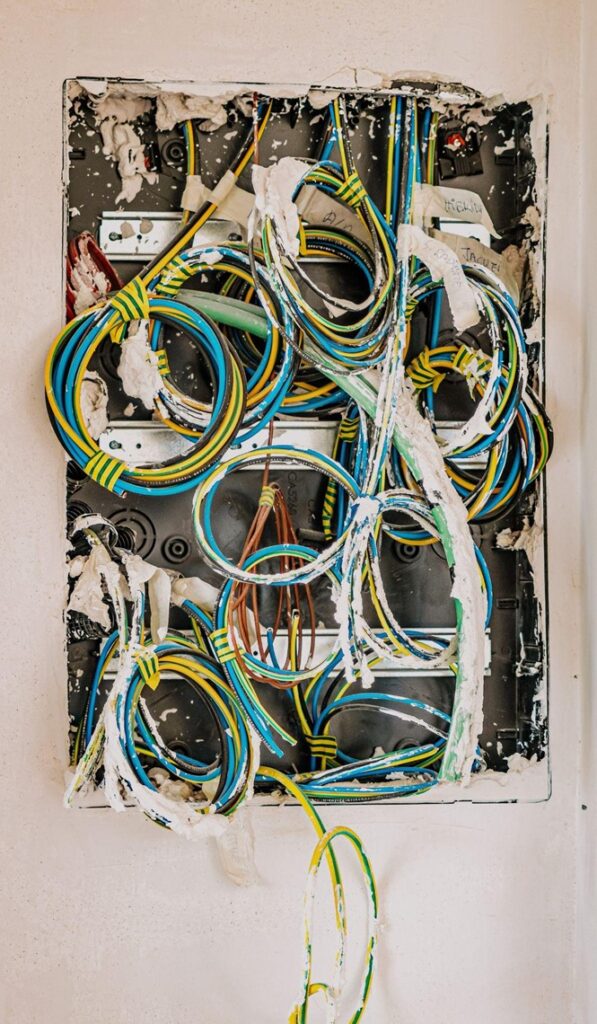Top Five Reasons Why Your Lights Flicker - PTX Electric
- PTX Electric
If you notice your lights flickering from time to time, there are several steps you can take to diagnose and fix the problem.
But the challenge is knowing what’s causing the faulty lighting in the first place because you could inadvertently make the issue worse if you try the wrong repairs.
At worst, flickering lights could be your final warning before an electrical fire starts, but most often, you can quickly fix the problem once you know what’s causing it.
So, to help you figure out what’s making your lights flicker, here are the top five reasons and what to do if you think you have a real problem on your hands.
What causes flickering lights?
Technically speaking, a light bulb flickers when it doesn’t receive a steady voltage from the home’s electrical system. If the voltage drops suddenly, light bulbs in the house will dim momentarily only to brighten up again when voltage returns to an average level.

So usually, the problem is confined to specific places like a spare bedroom or a garage – if voltage fluctuations are the root of the problem, that is.
Otherwise, dimming and flickering lights may be the result of:
- Loose light bulbs
- Using the wrong type of light bulb
- Faulty or failing switches and dimmers
- Damaged electrical wiring
- Overloaded circuits
Let’s go over each issue to give a better idea of diagnosing flickering and dimming lights.
1 – Loose light bulbs
First, if your lights constantly flicker, remove the bulb and inspect the threading for damage like cracks and chips. If the threading seems OK, then simply screw the bulb back in and make sure you tighten it well.
Usually, that’s enough to fix flickering lights, but if that doesn’t fix the issue. You’re dealing with another cause.
2 – Using the wrong type of light bulb
Always remember that light bulbs come with a recommended wattage for a reason, so it’s never a good idea to install a bulb with a wattage that’s too high.
What will happen is the bulb won’t be able to pull a steady voltage from the home’s electrical system and flicker as it tries to draw enough energy to brighten up.
Honestly, this issue is so familiar and easy to fix that you might overlook it.
If you have a dimmer switch with a dimmer light fixture, you must use an actual dimmer bulb. You can’t substitute one for a standard light bulb and expect it to work correctly.
3 – Faulty switch and dimmer
Along those lines, the problem could be a faulty switch or dimmer.
That’s because switches and dimmers are still physical devices that can break or loosen after repeated use.
So if a dimmer can’t set a steady voltage level, the light bulbs will flicker as if the light bulb itself is the problem.
In this case, the easiest way to fix the issue once and for all is to replace the entire switch, but you should only do this repair if you have experience with electrical wiring.
If you don’t, it can be dangerous to make a mistake, which is why you should consider calling a professional electrician who knows the risks.
4 – Damaged electrical wiring
If your lights are still dimming and flickering on their own after changing bulbs and switches, you could be dealing with damaged electrical wiring.
Certainly, all electrical wiring degrades over time, but if the home gets flood damage or fire damage, it can cause faulty wiring throughout the house.
The only way to know if electrical wiring has been damaged is to consult with a licensed, reputable electrician to diagnose the problem accurately.
5 – Overloaded circuits
Lastly, the issue could relate to having too heavy of an electrical load on one circuit.
It’s not a problem you typically see in new homes, but when the house has been renovated over the years, it’s more likely that circuitry hasn’t been upgraded along with the rest of the home.
While it’s difficult to notice unless you know what to watch out for, one symptom of an overloaded circuit is when lights dim as appliances turn on and when electricity in the home is at peak usage.
Either way, overloaded circuits that cause flickering lights are a fire hazard you must address before it’s too late.
Are flickering lights a hazard?
It’s never a good idea to ignore flickering lights because they are, indeed, signs of a potential fire hazard. Even if you’re not sure how severe the problem is, you should call in a professional electrician to find the root cause.
Certainly, flickering lights aren’t a fire hazard all the time because the problem can be as ordinary as a light bulb failing or one that isn’t installed correctly.
But the fact of the matter is that faulty electrical wiring is one of the most common causes of fires in the home. The tricky part is that many electrical components can cause fires, and defective lighting is one of them.
That’s why it’s so important to install lighting correctly so that you can minimize the risk of an electrical malfunction causing a fire.
Where to find professional light installation in Vancouver
Often, the best way to avoid faulty lighting is to install it correctly from the start.
That’s why we take the time to do the job right and ensure that the new lighting meets all safety standards.
If you have any questions about lights then please don’t hesitate to get in contact with us.
